

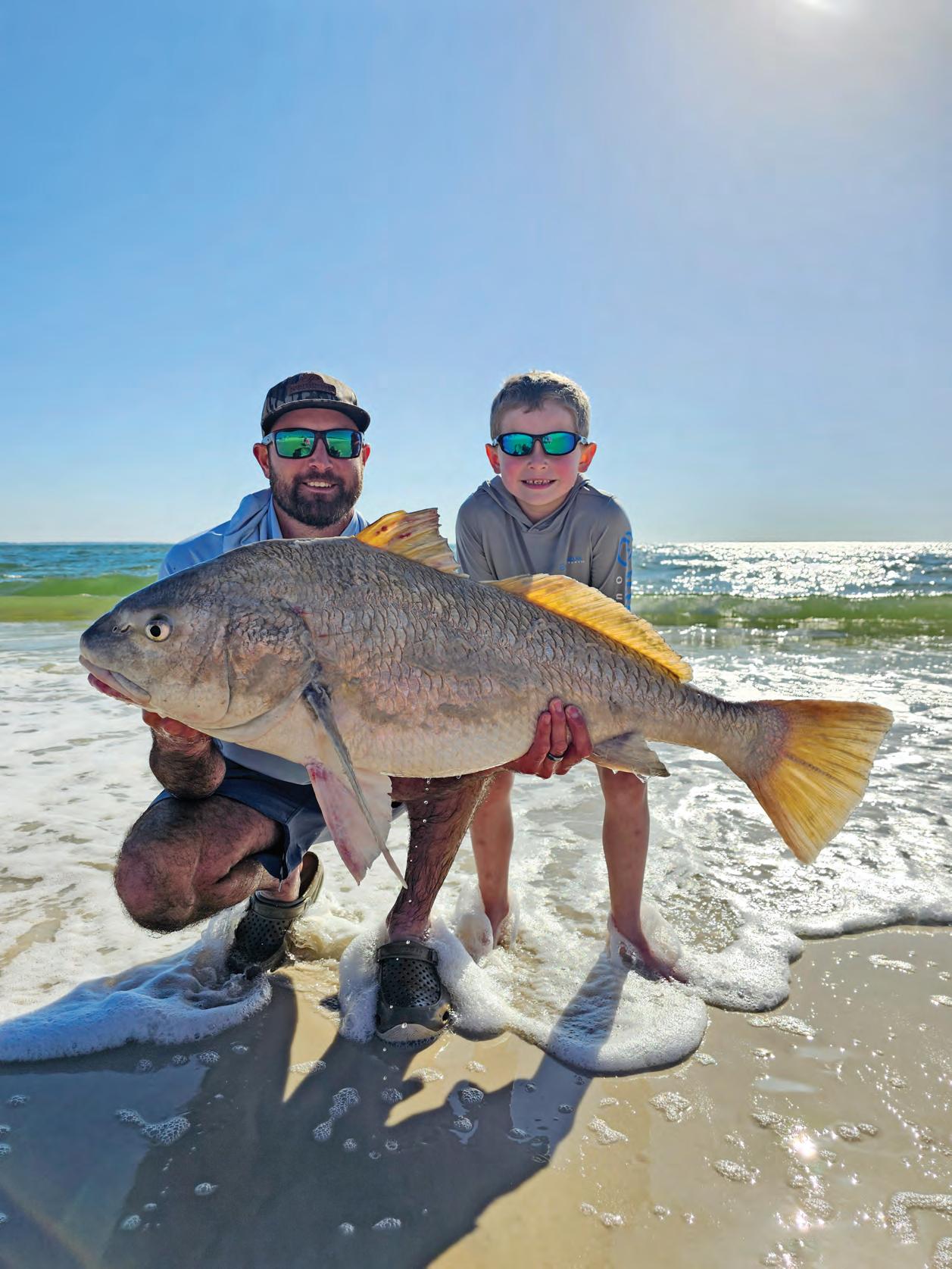
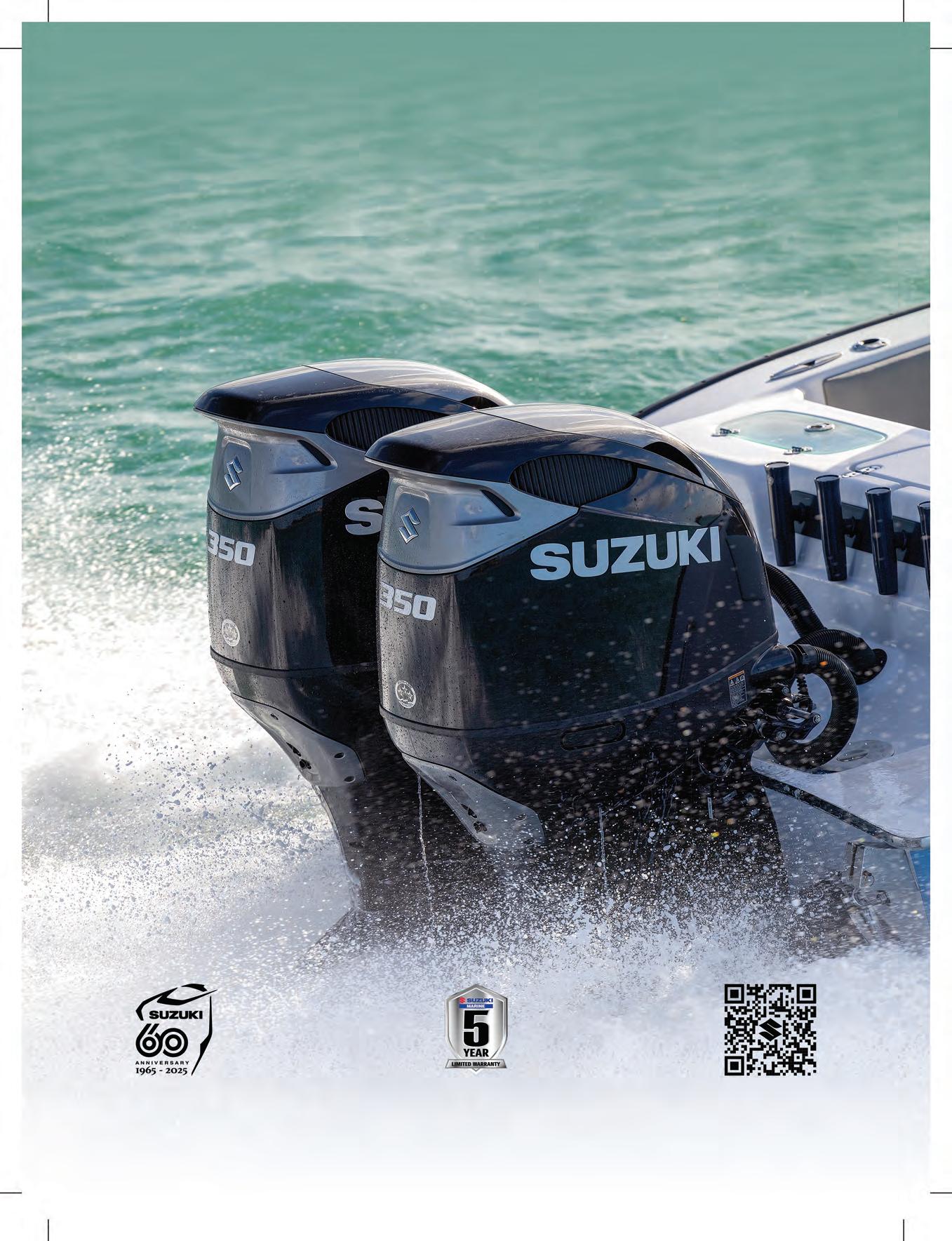

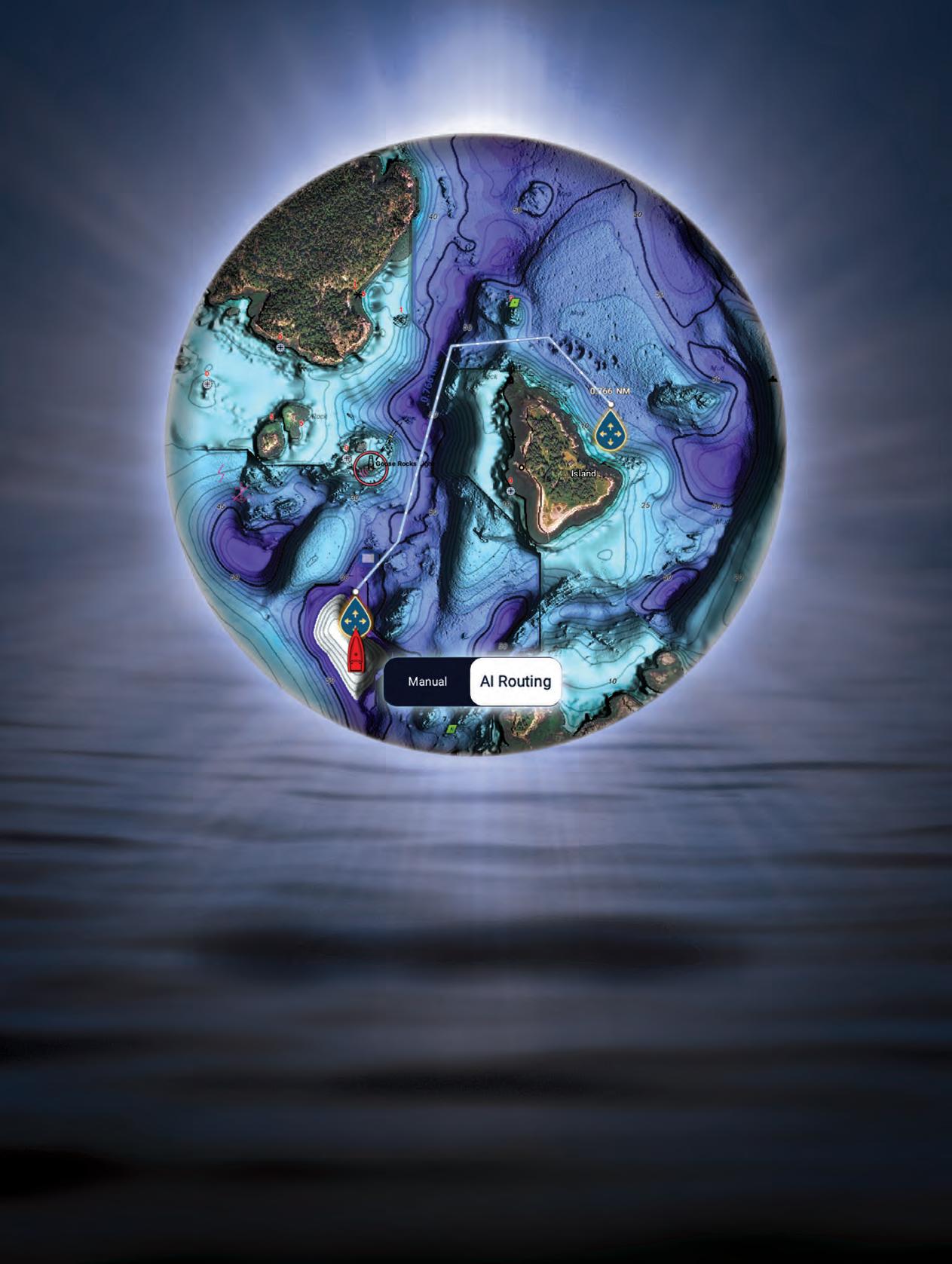
You want AI Routing! Let TZ MAPS with AI Routing make route planning a snap. Don’t take our word for it. Scan here to see for yourself how easy it is!


















You want AI Routing! Let TZ MAPS with AI Routing make route planning a snap. Don’t take our word for it. Scan here to see for yourself how easy it is!


















Embarking on the open water is an exhilarating experience, flled with the promise of adventure and relaxation. Whether you’re a seasoned sailor or a weekend cruiser, protecting your vessel with proper insurance is not just a choice—it’s a necessity. Explore the reasons why every boat owner should prioritize boat insurance for a worry-free voyage.
The open water can be unpredictable, with unexpected storms, collisions, or other potential accidents. Boat insurance can give you fnancial protection if there is damage to your vessel, providing coverage for repairs or replacement.
Accidents on the water can result in damage to other boats, docks, or even injuries to passengers. Boat insurance offers liability coverage, which can pay for damages or injuries you’re liable for while boating, up to specifed limits, and lawsuit costs if you’re sued. This includes damage you cause to another watercraft or if someone on or near your boat is injured and you’re found to be legally responsible.
Unfortunately, boat theft and vandalism are realities that boat owners face. Boat insurance has comprehensive and collision coverage that can protect you against events outside of your control, including theft and vandalism.
Accidents on the water may lead to injuries for you or your passengers. Boat insurance offers a range of optional medical payments coverage limits, helping to cover medical expenses if you are in an accident or someone is hurt on your boat, regardless of fault.
If you fnanced the purchase of your boat, most lenders require insurance coverage to protect their investment. Having boat insurance not only fulflls these requirements but also gives you peace of mind knowing that your fnancial interests are safeguarded.


Some water municipalities and marinas may require proof of insurance for docking or accessing certain areas. Boat insurance allows you the fexibility to explore different destinations without worrying about entry restrictions.
Emergency towing and assistance
Progressive boat insurance can include optional Sign & Glide® On-Water Towing coverage. If your boat is disabled or breaks down on the water, Sign & Glide® pays for on-water towing, jump starts, soft un-groundings, and fuel delivery.
Wreckage removal
If your boat sinks, Progressive boat insurance will cover the cost of removing your boat from the water (if removal is legally required).
Investing in boat insurance is not just about protecting a valuable asset; it’s about safeguarding the memories, experiences, and joy that come with your on-water adventures. Don’t let unforeseen circumstances disrupt your journey—navigate with confdence, knowing that Progressive boat insurance has you covered. Ensure a smooth and worry-free voyage, because when it comes to your boat, peace of mind is the ultimate luxury.
Scan to get a quote in as little as 4 minutes
learn more.





















Tim Barefoot
Since the endangered, gag grouper and American red snapper are o!-limits this month, it would be a good time to go deeper and/or change up your tactics to target di!erent species. For example, go ahead and catch your three scamp/red grouper combo, then switch over to smaller baits and smaller circle hooks on chicken rigs to target beeliners, trigger sh grunts and seabass.
I would strongly suggest taking live pin sh from the marina for scamps and red grouper. is will accomplish two things. One, it will weed out a bunch of trash bites from smaller snappers and other bait steelers because only the sh with a mouth large enough to eat the pin sh will give it a go, and two, it will catch the older (larger) sh that o en will not bite a chicken rig and cut bait. e chicken rig with a bank sinker, and the bank sinker with a triple swivel, leader and hook have been the industry standard for many decades, but these sh have evolved and have become savvy to this method, in my humble opinion. is is the reason the Decoy Jig system is so e!ective. ey’ve never seen anything like it and it’s a clever disguise of what is really happening; the weight and bait are in one clean package, attached by a piece of %uorocarbon.

ere is one downfall to shing live pin sh on the Decoy Jig—it will de nitely get the shark bite. Sharks, like many other sh, are hardwired to eat this struggling bait attached to something else they like to eat, like a squid or a crab.

ere’s another sh I didn’t mention earlier, but this is a good time of year to target hog sh. ere are many schools of thought when it comes to catching them. Many say the chicken rig is the ultimate and, yes, there have been a lot of hog sh caught on your standard chicken rig. But this is a pretty wily species, and hard to catch for a number of reasons. Not only are they hard
to get to bite, but they pull HARD! You have to have seriously strong connections because they will test every part of your tackle. ere’s one more sh that is almost as good table fare and that’s the white jolt head porgy. Same tactics, same everything; you just gotta nd them. ey are beyond delicious. You can troll all you want, but I’ll spend my time bottom shing for the best groceries and keep the light line out back for any wahoo, dolphin, kings or tuna that may cruise by. It pays dividends to jig up live cigar minnows and live sardines on the Sabiki or just purchase them for the light line. August and September are the months that wahoo, yellow n, dolphin, sail sh— you name it—are everywhere inshore following big schools of bait, and a live cig or sardine will de nitely get the bite. I would de nitely keep a live pitch bait ready on a circle hook on piece of %uorocarbon for the sail sh that’ll swim by the boat. Keep the thumping music, cooler slamming loud everything to a minimum if you want to have a shot at getting some of these sh to swim up to the boat. Fact: You’ll see more sh near the boat when you’re quiet, otherwise they will keep their distance and you probably won’t see them, and they’ll have their guard up if they do get near the boat.
Go on, get down to the bottom or at least lower in the water column for the best groceries and keep a pretty live bait out back on the lite line for a great day of catching...not shing.
Check out more from Tim Barefoot at barefootcatsandtackle.com.

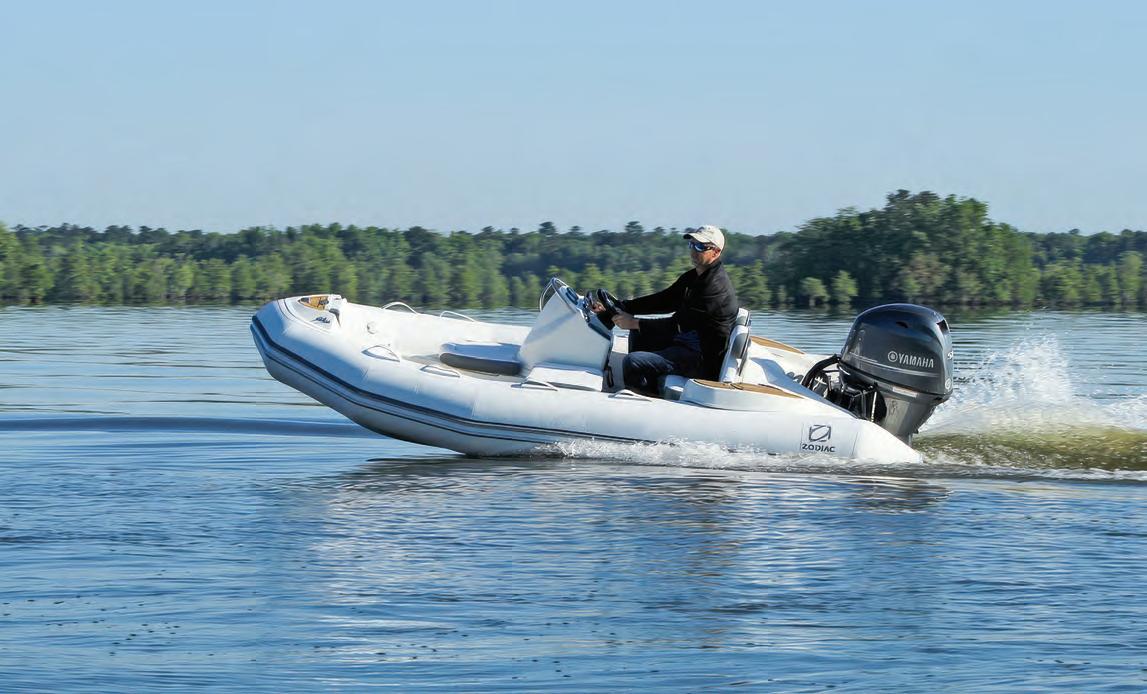



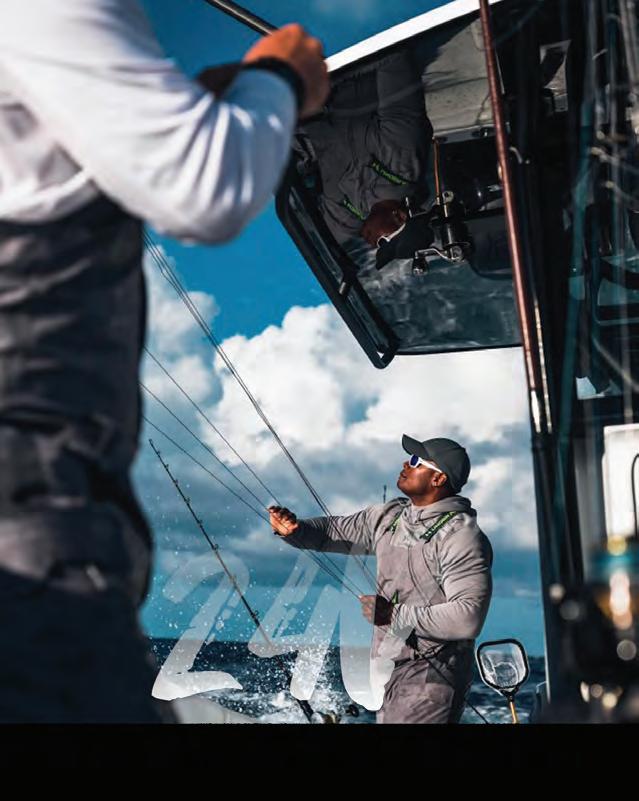











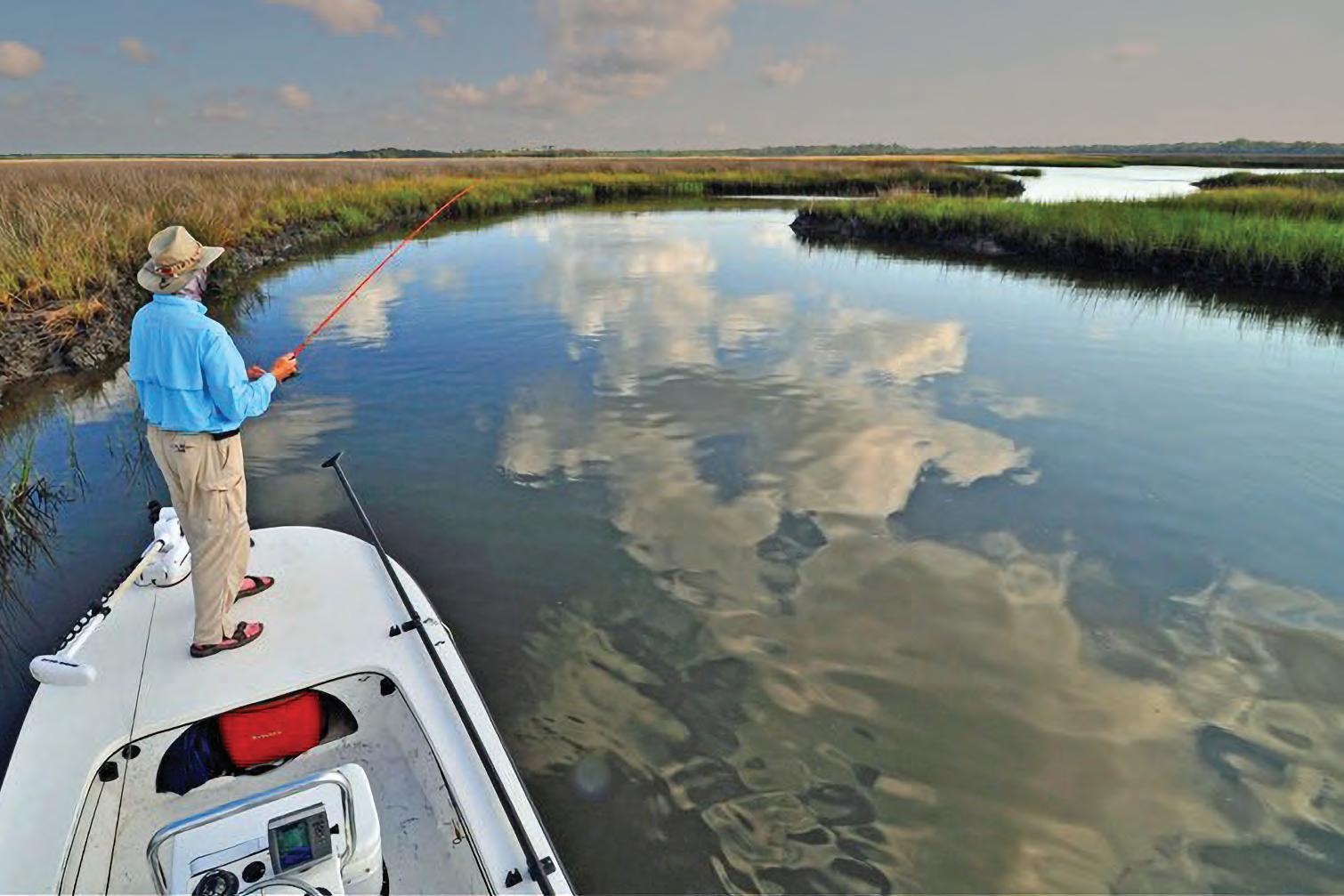
By Joe Woody
Somewhere in McDowell County, North Carolina, where the Blue Ridge Mountains lean in close and the rivers run clear enough to drink, there’s a place where sh outnumber people, and cell service is more suggestion than fact. It’s a land of steep gorges, sparkling lakes, and waters that curl through the woods like they have secrets to keep. Welcome to the triple-threat shing grounds of Lake James, the Linville Gorge, and the Catawba River — tucked into a county that doesn’t make much noise but delivers in trout, bass, and backcountry beauty.
If you’ve never heard of McDowell County, don’t worry — that just means the sh haven’t heard of you either, and your odds are still good. Whether you’re a dry-%y purist with a hip pack and a “River Runs rough It” complex or someone who likes to toss worms near pretty rocks, this corner of the Carolinas has a spot for you. Bass are stout and sassy. Trout are plentiful, and they have attitudes to match. So gas up the truck, tie on something that worked last season, and head for the hills. e shing is great, the views are even better, and McDowell County is ready to welcome you — even if the trout aren’t.
Lake James is the area’s big-water bu!et. is 6,800-acre reservoir between Burke and McDowell counties o!ers smallmouth and largemouth bass, walleye, crappie, bluegill, hybrid striped bass, and cat sh. Spring and early summer bring aggressive smallmouth to the surface from April to June. Tossing a Pop R or a Zara Spook at dawn can trigger explosive strikes. Crappie move shallow in May and June, while cat sh linger year-round, especially from fall through early spring. Bass shing is best around rocky points and submerged trees with crankbaits or so plastics. Walleye respond to trolling or jigging near the dam. If you’re a er cat sh, bring cut bait and patience. Lake James State Park has public ramps, campgrounds, showers, and picnic shelters — perfect for anglers who like their wild with a touch of comfort.
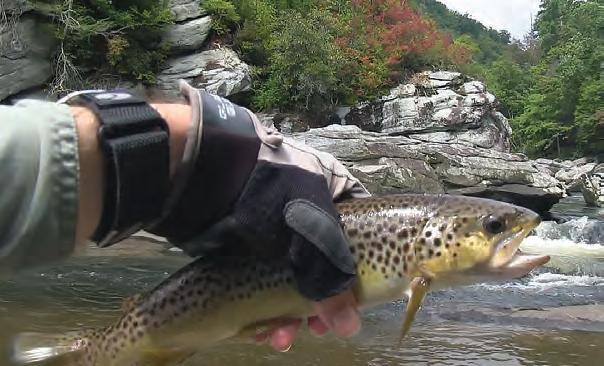
If Lake James is your comfy recliner, Linville Gorge is the rugged Adirondack chair that bites back. Known as the Grand Canyon of the East, this steep gorge is home to the Linville River, one of North Carolina’s best wild trout waters. e upper river holds wild and stocked rainbow, brook, and brown trout. Below Linville Falls, you’ll nd a backcountry adventure with native browns lurking in clear pools. Reaching prime spots requires steep descents, with some trails dropping 1,400 feet. e solitude and scenery reward every blister. Bring light tackle, stealthy casts, and plenty of water. Spring hatches bring trout to the surface, and a well-placed dry %y can tempt a wary sh. Remember your headlamp — climbing out in the dark is no fun.
Below Lake James, the Catawba River %ows cool and clear, sheltering rainbow and brown trout that grow large and wary. Float trips are ideal. An eight-mile dri from Bridgewater Dam to Morganton delivers ri sh. e Joseph McDowell Greenway o!ers piers, canoe launches, and bank access perfect for beginners or families. Streamers and weighted nymphs excel in the tailwaters, while warmer sections downstream attract bass and pan sh.
Wherever you cast, the sh here don’t come easy — but they come honest. And in this corner of the Blue Ridge, that’s the best kind of bite.



















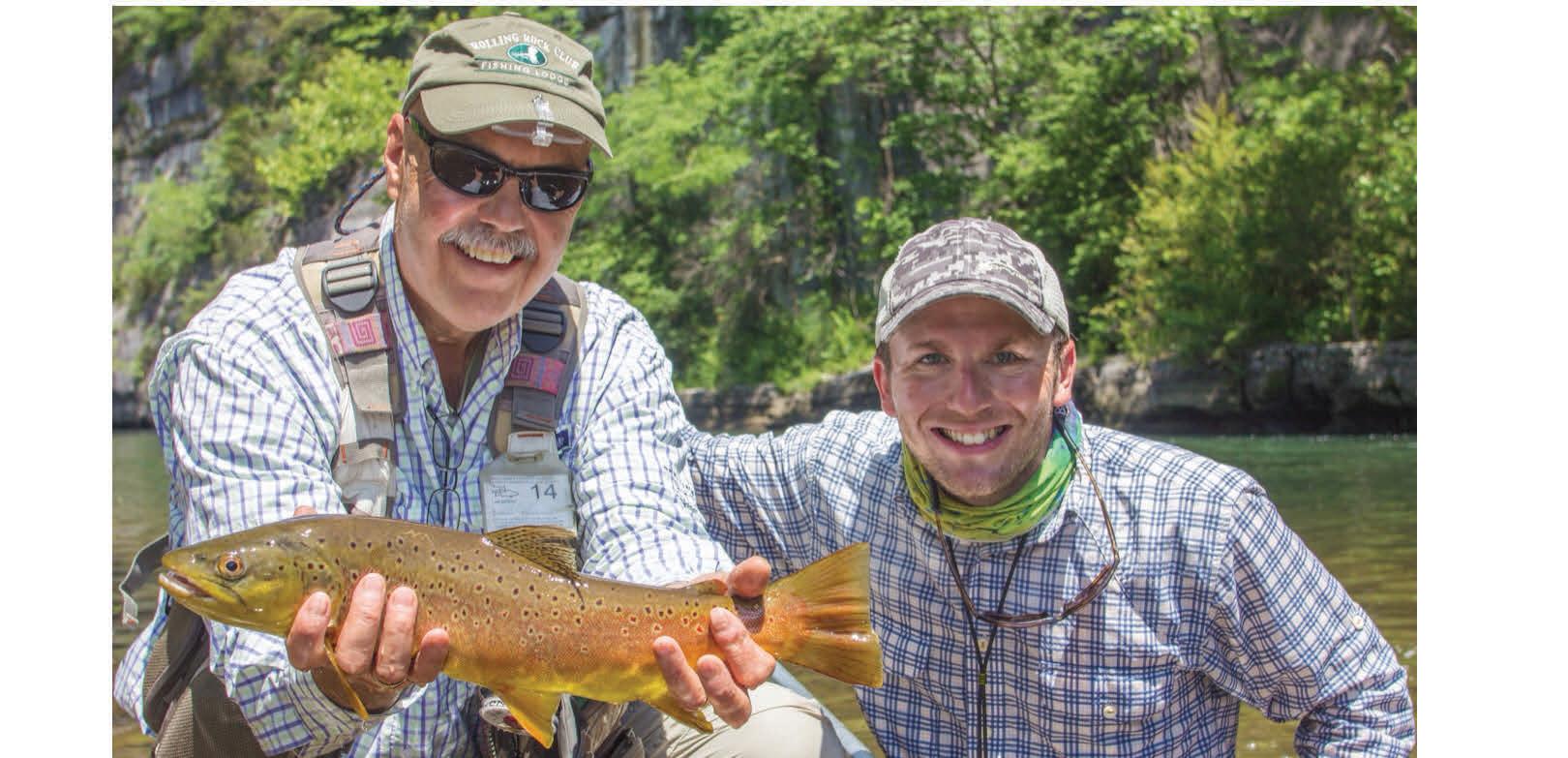




Capt. Mike Smith

Black drums, aka “Big Uglies,” are a super fun sh to catch. It doesn’t matter if they are 18 inches weighing two pounds or 5 footers weighing 90 pounds. ey put up one heck of a dragpulling ght once they gure out that they’re hooked.
Black drum can be found in inlets, saltwater estuaries, bays, river mouths, brackish creeks and especially anywhere in close proximity to oyster beds as they love to eat oysters, clams, crabs, shrimp and bait sh. ey are o en in huge schools and will stay in one spot for a week or so if there is a lot of food for them and not a lot of predators, which means that you can catch dozens of them when the bite is on.
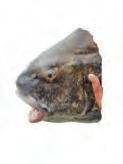
My favorite way to target “big uglies” is on the incoming tide, in shallow estuaries, less than 3 feet deep. at is when you can see them tailing as they root around oyster clumps for crabs and shrimp. A well-placed shrimp or crab o!ering will get their attention very quickly. Make sure you have enough weight to get it to the bottom so they can nd it.
on them. De nitely sh the older docks with the most stu! growing on them. ese docks pilings will attract the most crabs and shrimp to them. Old dock pilings are like grocery stores for black drum. When I sh the docks for black drum I usually have one of two baits with me. Live or frozen shrimp or a scented shrimp jig. ose are my goto baits for drum around the docks. Real shrimp works the best, but the scented jigs are pretty good too. A shrimp rigged with a small split shot is how I usually target black drum. Just cast it to where you think the sh are and wait for the hit. If you are shing with a scented shrimp jig just bounce it slowly on the bottom as you reel it in. It is similar to the way that you would sh for a %ounder. e slower the better.
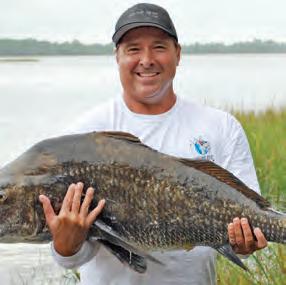
Black drums have four nostrils, and their sense of smell is amazing, so the stinkier the bait, the better when targeting these sh. A great arti cial bait is the Berkely Gulp shrimp on a 1/8 ounce jig head. You can just cast it to the sh and let it sit on the bottom and wait for them to nd it. However, if you give it a bounce or two you will usually get their attention much more quickly.
Another great place to target “big uglies” is around docks. Dock pilings tend to have lots of oysters, clams, barnacles and sponges growing
For surf shing anglers, large schools of black drum typically work their way up and down the beaches in the cooler months feeding on crustaceans. Use a beefed up pompano rig, jig or sh nder rig and place them in front of the schools approaching. Long casts are o en needed, so be sure to have plenty of line capacity on your surf shing reels when targeting the large ones. Not to mention, once you hook into a big drum the drag is going to go screaming! You’ll want anywhere from 20-50 lb. main line for your best opportunity to land one.


Black drum make for a tasty dinnertime treat, but I wouldn’t suggest eating the big ones. ey are always full of worms. I nd that the best ones for eating are 28 inches or less in length.
I caught the black drum in the picture above on a dead shrimp. It was about a 50 pounder and took 30 minutes to get it in. I saw it tailing next to an oyster bar.
Capt. Mike Smith, owner of Fish Your Ass O Charters, is an inshore shing guide who has been shing the inshore waters, oyster bars and grass ats of Florida for more than 40 years. Reach him at (561) 339-2317, email: contact@ shyourasso .com or visit shyourasso .com.
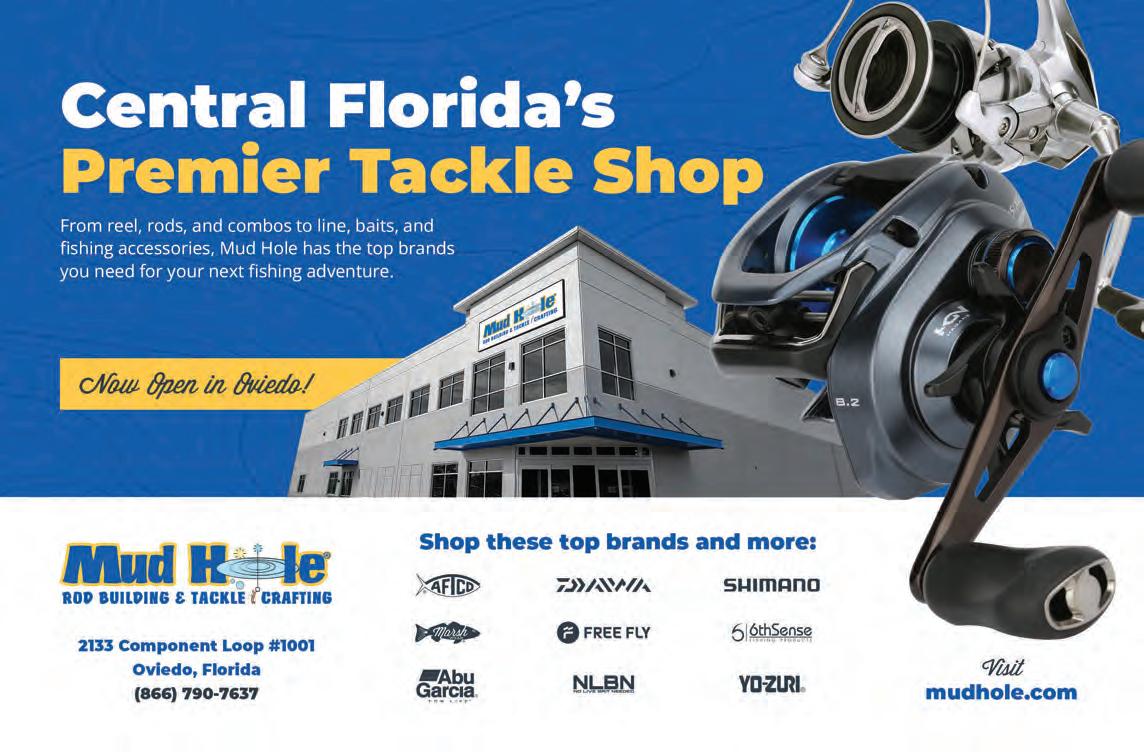






























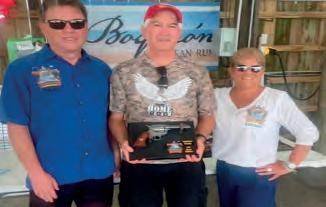




SOUTH SHORE HARBOUR MARINA
2400 South Shore Harbour Blvd, League City, TX 77573
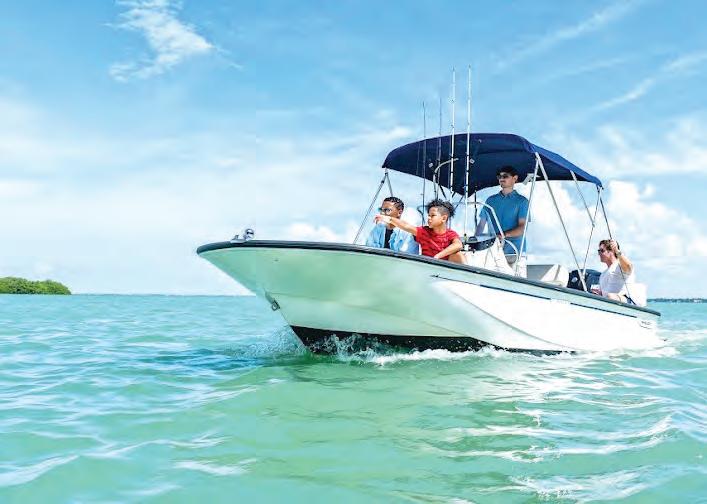
LAKE LEWISVILLE
1481 E Hill Park Rd, Lewisville, TX 75056
GRANDPAPPY POINT
1789 Harbor Dr, Denison, TX 75020
NORTH POINT MARINA
3681 Cedar Ridge Park Rd, Temple, TX 76502
WALDEN MARINA
12050 Melville Dr Suite 6, Montgomery, TX 77356
WATERPOINT MARINA
15320 TX-105 Suite 500, Montgomery, TX 77356
ROUGH HOLLOW IN LAKEWAY 105 Yacht Club Cove, Lakeway, TX 78734
SANDY CREEK MARINA
8714 Lime Creek Rd, Leander, TX 78641
1705 S Quinlan Park Rd, Austin, TX 78732
MARKER 37 MARINA
13317 S Padre Island Dr, Corpus Christi, TX 78418
PELICAN REST MARINA
7819 Broadway St, Galveston, TX 77554


COVE HARBOR YACHT CLUB 121 Cove Harbor Rockport, TX 78382 Boats available for













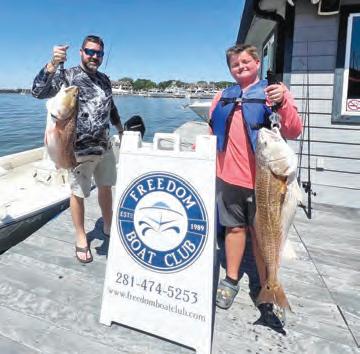




1 Fri 9:28 0.8 9:08 0.0 6:38 8:12
2
3 Sun 7:12 1.0 10:33 -0.1 6:39 8:10
4 Mon 7:34 1.0 11:16 -0.2
5
6
8
9
12
13
16
17
18
22
23
24
25 Mon 9:29 0.9 8:59 0.9 3:26 0.3 4:03 0.6 6:52 7:50
26 Tue 9:37 0.9 10:22 0.9 3:55 0.4 4:42 0.5 6:52 7:49
27 Wed 9:40 0.9 11:55 0.9 4:21 0.6 5:22 0.3 6:53 7:47
28 Thu 9:32 0.9 4:46 0.8 6:04 0.3 6:53 7:46
29 Fri 1:43 0.9 8:29A 1.0 5:07 0.9 6:51 0.2 6:54 7:45
30 Sat 6:57 1.0 7:44 0.1 6:54 7:44
31 Sun 6:37 1.1 8:43 0.1 6:55 7:43
































www.USHarbors.com Eagle Point, Galveston Bay, TX - Aug 2025


2
































































































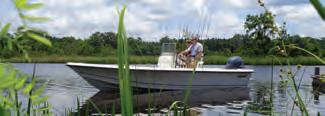








BY CAPT. MICHAEL OKRUHLIK MyCoastOutdoors@yahoo.com www.MyCoastOutdoors.com
When June rolls around and the tides align, there’s no place I’d rather be than Southwest Florida—with a rod in hand and visions of giant snook dancing in my head. This year, my buddies and I made the pilgrimage with a simple mission: land a personal best. Big fish only. No compromises.
Our daily rhythm was dialed in: fish at first light, break for lunch and a nap, then hit the water again at dusk. On our first morning, we were thigh-deep before sunrise, casting into the mystery of the early light. Within minutes, I hooked a brute. It crushed my lure and made a blistering run—until my line snapped clean. Devastated. But not alone—the others were tight on steady 20–25 inchers.
We spot-hopped the rest of the morning, landing a solid variety of fish, then rested up, ready to tangle with giants again at dusk.
That evening, we waded into a legendary snook haunt. I connected again—with something even bigger. After a long, nerve-wracking battle,
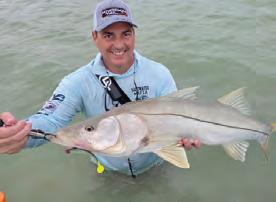
my leader snapped. Again. Moments later, John hooked into a monster that nearly emptied his spool… and then his leader failed too. We were stunned but fired up. The big girls were here.
I re-rigged and kept casting. Soon enough, another explosion on my paddle tail—this one the biggest yet. She breached once, massive and thick. Then, just like that—gone. My third heartbreak of the day. Lesson learned: if you’re chasing giants, bring the heavy gear.
Day two brought redemption. Jeff landed his personal best—an impressive 34-inch snook on a 4” Knockin Tail Lure. I was eager to return to the spot that broke us, but a sudden evening storm shut us down.
Our last morning offered solid action—snook to 8 pounds, nothing to complain about. Still, I couldn’t shake the thought of one last chance
that evening. No storms. No wind. Just flat, silent water and that final opportunity.
Wading quietly along the sandy shore, every cast felt like it could change everything. And then it happened. A massive strike. The fish peeled line off like a runaway train, then turned and charged. I cranked fast, heart in my throat. The fight was clean, intense, unforgettable.
She measured a fat 38 inches, bottoming out my 15-pound scale. Hooked right in the jaw, leader untouched. My new personal best.
This trip was a rollercoaster—equal parts frustration and triumph. But that final evening, under a fading Florida sun, everything came together. And that’s what keeps us coming back: one cast away from glory.
5” Knockin Tail Lure, 40 lb fluorocarbon leader, Texas style, baitcaster in hand.
LOCATION:
Undisclosed shoreline, Southwest Florida— because some spots should stay sacred.
Capt. Michael Okruhlik is the inventor of Knockin Tail Lures®, and the owner of www.MyCoastOutdoors.com.
CAPT.
DAVID C DILLMAN
832-228-8012
galvestonbaycharterfishing.com
When you were young, perils that laid before you seemed distant. You seldom had fear, nothing scared you. Death did not seem real. You were willing to try most things, even if it involved cheating death. Now that you are older, you hear yourself say, “how did I ever survive?”

Becoming a first-time boat owner, you never think about the dangers. The boat gives you a sense of freedom, escape from the world, you become the king of the sea! My first boat was a center console 16-foot Monarch. I strictly fished East Galveston Bay. Getting up in the wee hours of the morning, riding the Galveston ferry to the launch at Stingaree. There was a ramp and a drop box for the ramp fee at the time, nothing fancy. I fished every inch of East Bay in that boat.
I then sold that boat and bought my first of three Pro-Lines, a 17-footer with a 115 Sea-Drive. After buying this boat, I ventured to Eagle Point Fishing Camp for the first time. Little did I know at the time, this would become my home port, now for over 45 years. Having no fear on my first outing, I was abruptly halted by a reef called Todd’s Dump. This was a wake up call that I needed to study and learn everything about this bay system, not just East Galveston Bay. Lucky for me, the owner of Eagle Point, Johnny Valentino, took a liking to me as well as a couple of old timers that fished out of there for years. Luck never really played a part because God brings people into your life for a reason (Proverbs 3: 5-6). Under their guidance, I learned the area and the dangers to avoid. One of them the large wakes created by the ships.

I learned all about the dangers of the wakes by fishing the spoil banks and shell reefs that align the Houston/Galveston ship channel. Even with all my knowledge of knowing how the ships are loaded and which ships will throw a large wake, you should never let your guard down. One day when fishing with a “old salt” John and his brother, we did just that. Anchored up on what was the South end of Redfish Island, we were catching fish being mindful of the passing ships. A small tanker was heading down the channel, we never saw a breaking wake as it passed the North end of Redfish Island. Thinking nothing of it, we continued to fish, then it was too late. I looked back to the North, hearing the roar of a breaking wave. We had no time to start the boat and turn to head into the wave. The water was being sucked from underneath the boat, held the anchor tight as the wave broadsided us, nearly flipping the boat. We slammed back down just as the next wave filled the boat. We let our guard down, but God saved us from a catastrophe. We managed to get the boat started, pulled anchor while underway to drain the water from the boat. Needless to say, we called it a day.
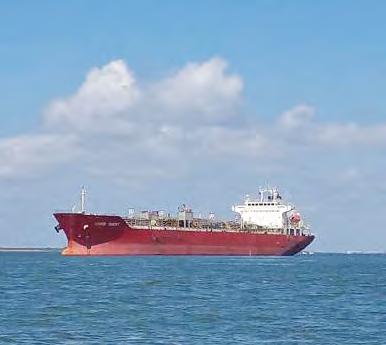
In the last couple years there have been a few people caught by these wakes with fatal results. Who is to blame? This can be debated whether it is the ship pilots traveling in excessive speed or the boater lacking knowledge or not paying attention. This time of year, many anglers are fishing near the channel. Even those with experience can get caught in a dangerous situation. One must keep their “Head On A Swivel” at all times, never letting your guard down. One life lost is one too many. I offer a boating class where I go in your boat and teach you how to navigate Galveston Bay. We can even fish as you learn. Many have taken advantage of the knowledge I have and in turn made their angling and boating experience more successful. Safety while boating should be your top priority, catching fish is just a bonus.

What’s made Eagle Point Fishing Camp unique since 1929 is its location and business model. Because it’s in the center of the Galveston Bay, EPFC allows anglers to conveniently fish a vast stretch of water spanning from Houston to Galveston. Using the same full-service concept as its date of establishment, EPFC has proven for nearly a century that easy access to the water combined with a skilled staff creates the perfect fishing experience. Along with the boat ramp, boat storage, live bait for purchase, tackle shop, and RV park, EPFC has always had a fleet of shrimp boats to supply the bait that so many of their regular customers desire. Their successful commercial shrimping business has been an intricate part of what makes EPFC unique.







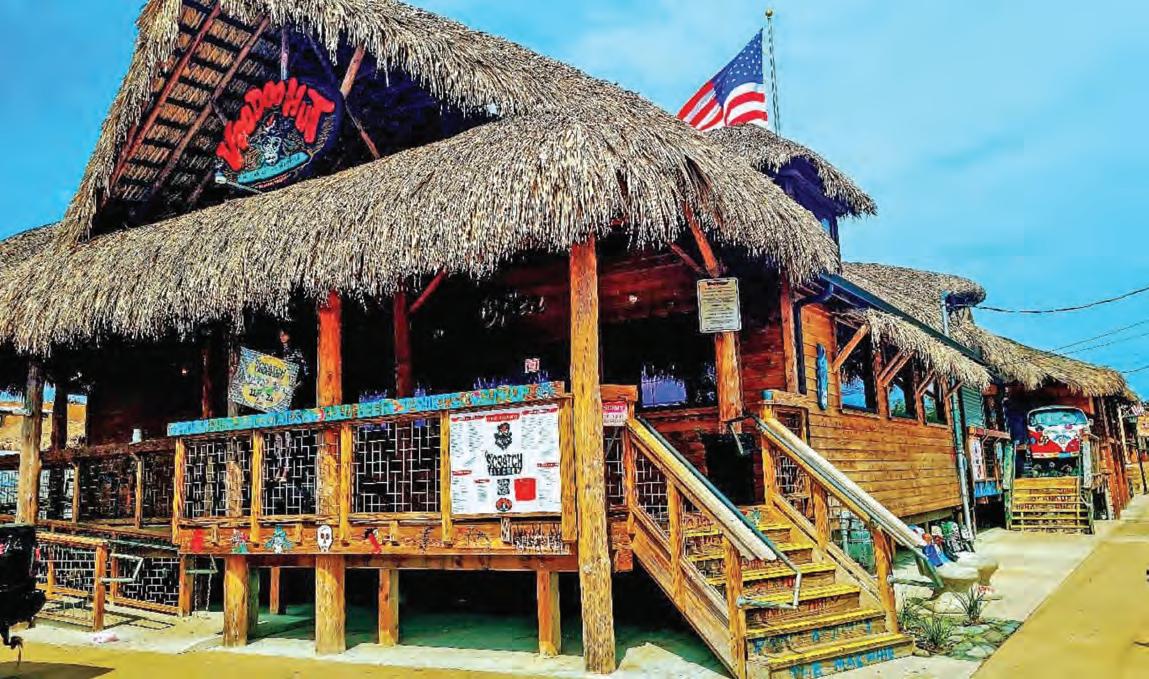










NUnfortunate experiences linger in my memory. If you spend enough time on the water, sooner or later you will have your own tales to tell. Remember Murphy’s Law, “If something can go wrong, it probably will”.
Most of us expert to return to the marina sometime after a full day on the water without any mishaps. We all know the weather in the afternoon will be just like the stillness and sunshine of the morning.
But sometimes it does not turn out that way. My (fishing bag) goes with me on every trip.
The Galveston Bay complex can change quickly to thunderstorms on these pleasant days of summer even in the winter preceding these major cold fronts. Pack an extra jacket (water-resistant), long pants and extra cotton shirt. Also, place an extra hat, just in case. No one likes to spend the entire day out on the water without one.
Everyone should carry a first aid kit. In addition, take your cellular phone with extra charging devises) which can come in very handy if you need to call 9-1-1. A handheld VHF radio will also suffice.
In your first aid kit, place a box of matches; they can be used to start a fire if you wind up on deserted shoreline.
Fishing pliers are essential. Many times, I have had to use extra ones in my bag, because a friend didn’t bring his or we lost them overboard. Throw in a folding Fillet knife or, if room permits, an electric fillet knife with an extension cord.
The insect life aboard my boat would amaze you.
You can bet, if you start to wade fish early one morning and get close



enough to the grass line without much wind, you will find a swarm of gnats, flies, live bugs or our infamous mosquitoes, feeding on your body. Any type of insect repellent (can, tube or spray) can be a skinsaver. In addition, sunblock and lip balm can keep you out of harm’s way in the sun.
Sunglasses don’t last forever, even if they are tied around your neck. Carry an Extra pair, particularly if they are prescription. If you wear bifocals, take a back-up pair. Without them it can be a long, out-of-focus day out there.
If you take food, it pays to add a little more than you intend to eat. Carry some emergency rations like candy bars, peanuts or raisins. Place them in a plastic bag.
Speaking of plastic bags, throw some extra ones in your fishing bag. You’ll find plenty of uses for them, and they work well when you are packing your fillets.
If you are as curious as I am about how well other boats are doing, or if you just want to scan the horizon for flocks of birds, binoculars can come in handy. A small, lightweight pair will fit in the bag.
Remember that this is a small bag, not a suitcase. Based on your own experience, you’ll probably come up with some other items that are important for your area.
Of course, it pays to take a spool of extra line and maybe a good back-up reel, plus all that tackle you think you’ll need.
As always, have fun on the water.
See y’all on Galveston Bay.
It’s no fsh tale when you run with a John Deere. You can get everything done faster and easier, so you get more time on the water. Plus, our special offers make them the catch of the day.



The boating industry is jumping onboard with Dometic’s revolutionary DG3 Gyrostabilizer, due to its groundbreaking spin-up and spin-down times, energy e%ciency and superior performance in all types of sea conditions. is solution has literally taken vessel stabilization to a “Whole New Level,” capturing the attention of boaters and boat builders around the world. e !rst in a planned line of advanced stabilization solutions by Dometic, the new DG3 is targeted at the 35- to 41-foot !shing boat market.
Soon a er Dometic won the 2025 NMMA Innovation Award at the Miami International Boat Show for the DG3, leading American boat builder Regulator Marine announced that its new-for-2025 Regulator 35 Center Console would be o ered with Dometic’s DG3. “We are honored to have a respected builder like Regulator come onboard,” said Dometic Marine Segment President Eric Fetchko. “ eir latest center console agship is an ideal match for our system in terms of size, hull performance, overall quality and a wide range of premium features and technology. It’s also a wonderful platform to showcase our advanced capabilities, including energy e%ciency that enables o shore use without the need for an onboard generator,” added Fetchko.
e DG3 reduces spin-up time by more than 65%, reaching full readiness in just 16 minutes, compared to the typical 50 minutes required by current systems in the market. is means you’ll
get out on the water and out to distant !shing grounds faster. e system’s downtime is equally impressive, fully lowering in just 20 minutes, a signi!cant improvement over the eight or more hours (15X faster) required by current systems.
Dometic also pioneered innovations in energy storage and recapture, enabling the battery to recharge e%ciently. DG3 uses Dometic’s proprietary, industry-proven Inverted Roller Screw technology for true dynamic control and signi!cantly improved roll reduction performance over a wide range of sea sates. In addition, the push-pull motion of Dometic’s all-electric procession actuator is used to create power that contributes to running the system. During spin down, Dometic’s regenerative braking technology recharges the system’s dedicated 48V Lithium-Ion spin-up battery for the next use. Overall, the DG3 reduces power consumption by an impressive 40% compared to other gyros on the market.
DG3’s Inverted Planetary Roller Screw technology and proprietary all-electric procession actuator provide dynamic control of the gyro hemisphere for instant response to vessel movement and superior comfort over a full range of sea states. is allows DG3 to react faster to heavy wave motions, while also smoothing the ride in small and long period waves, where current gyros are less e ective.
Durability and reduced maintenance were also key goals for Dometic engineers. Dometic’s



durability, minimizes required service, and reduces total cost of ownership. Featuring a slower-spinning ywheel, larger, more robust bearings, patentpending inner race cooling, parallel path cooling, and a titanium heat exchanger, the DG3 is designed to stay cool and operate reliably for the long run.
Dometic designed the DG3 as an easy “dropin” replacement for other comparably sized systems available in the market today. e DG3 !ts within the same footprint and clearance speci!cations and features reversible mounting feet to address common challenges encountered by installers. To meet the needs of today’s boating market, Dometic’s DG3 is compatible with 12-, 24- and 48volt house battery systems.
To learn more about how Dometic’s DG3 can take your o shore shing adventure to a whole new level, visit www.dometic.com.





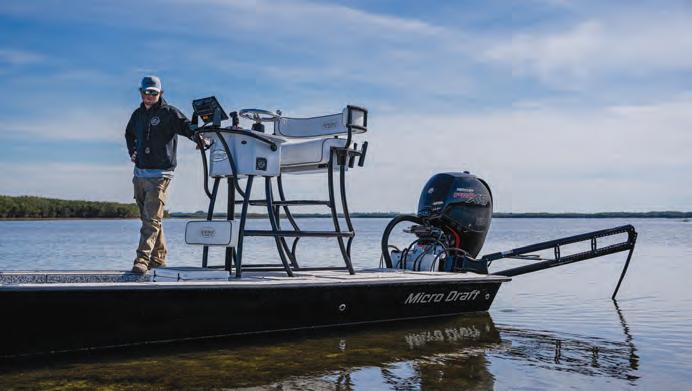



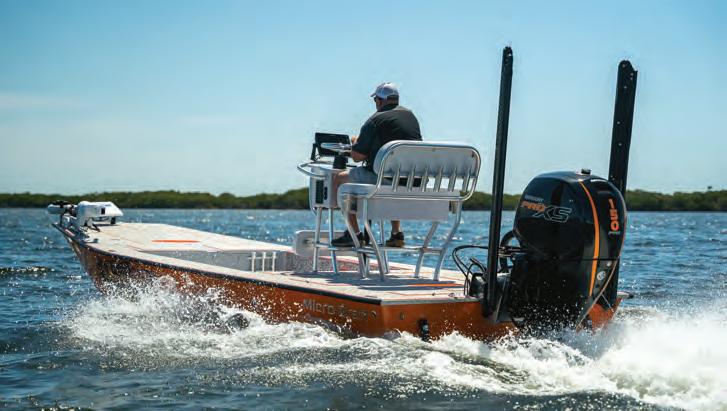





Nestled in the heart of the Caribbean, the US Virgin Islands embody a harmonious blend of natural beauty, cultural vibrancy, and laid-back serenity. ese islands are more than just a picturesque getaway; they are a living testament to nature’s rhythm and resilience, e ortlessly in tune with the world around them.
With no passport required for U.S. citizens, from the moment you arrive, the islands’ natural rhythm is palpable. e gentle sway of palm trees, the soothing sound of surf crashing against sandy shores, and the vibrant melodies of local music all echo the heartbeat of this tropical paradise. e islands’ lush landscapes, with their verdant hills and crystal-clear waters, mirror the steady pulse of life that sustains the local ecosystems and communities alike.
e US Virgin Islands’ environment is a symphony of biodiversity with world class shing and diving. ese natural elements are not static; they dance in harmony, in uenced by the tides, wind, and seasonal changes—further emphasizing the islands’ intrinsic rhythm. is delicate balance underscores the importance of conservation e orts, ensuring that future generations continue to experience the islands’ natural cadence.
Culturally, the US Virgin Islands are equally in tune. e music, dance and festivals re ect a vibrant heritage rooted in African, European and Caribbean traditions. e spirited calypso beats
and reggae rhythms are expressions of life's ongoing dance—celebrating resilience, community and joy. ese cultural expressions are an extension of the islands’ natural rhythm, showcasing how human life here moves seamlessly with nature’s ow.


In a world o en dictated by chaos and rapid change, the US Virgin Islands serve as a reminder of the beauty of being in sync with nature’s tempo. eir natural, cultural and ecological rhythms o er
a blueprint for sustainable living and harmony. As travelers and residents alike continue to embrace this rhythm, they uphold a legacy of balance—one that celebrates life’s natural ow and the enduring spirit of these remarkable islands. In the US Virgin Islands, being in rhythm isn’t just an ideal; it’s a way of life.

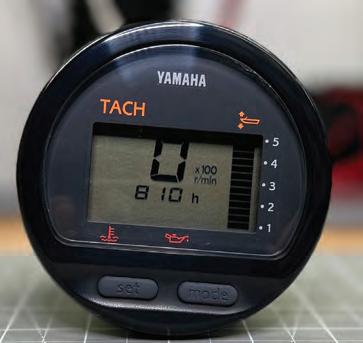




In some parts of the country the bass spawn is already starting to come to an end like it is down here in Florida and others may not start up for another couple months. Regardless of your phase, this post spawn !shing tip should help you dial in your !shery when the time is right for you! One thing is the same for every !shery and every species of bass a er they spawn, they are hungry! is can create some awesome and fun !shing opportunities that have led me to some of my best days on the water.
Typically a er the largemouth bass spawn, there are other !sh that will then begin their spawn. I’m not a scientist, but I’m sure this has a lot to do with the speci!c timing of why the bass do their thing when they do. In most areas of the southern United States, I know that the bluegill and o en times the shad, if they are in your lakes, will start to spawn very shortly a er the bass !nish up. Bass will use every advantage they can when these bait!sh group up to feed back up a er a long couple weeks or months protecting their eggs in the shallows and this can make for some fun !shing.
Smallmouth bass and spotted bass are very similar as well in the aspect of taking advantage
TYLER WOOLCOTT

of bait schools when they get in that post spawn phase. I have seen them group up and attack shad, perch, alewife schools and any other bait that is readily available to them. Typically I do a lot of my searching for these things with my electronics and forward facing sonar which is a very helpful tool for learning !sh activity and seeing what’s going on under the surface of the water.
Most of the time you can use clues you can visually see with your eyes to help you !nd this feed that is going on. Typically birds feeding on the water is an awesome sign of a feeding frenzy and that is one thing I ALWAYS look for. Also always keep your eyes peeled for !sh blowing up on the surface or shad ickering as well. Sometimes the very smallest clue can lead you to much larger picture. Birds standing on speci!c banks, the sound of bluegill popping around vegetation, anything that clues you in to bait in the area usually means the bass aren’t very far.
Hopefully this tip will help you when the !sh in your area get into the post spawn feed! Find the bait, you will !nd the bass! I always try to duplicate the bait!sh with whatever kind of lure you are throwing. Bluegill eaters - I will

throw a frog or a swimming in bluegill colors, etc. Shad eaters - I will throw white or silver topwaters and crankbaits, etc. Always match the hatch if possible! Good luck out there this season and tight lines!
Tyler Woolcott is a professional tournament angler and guide. Check out his website at www.tylerwoolcott shing.com.


“I never expected it to be so beautiful that it takes your breath away.”
— Kaya C., on Stauer Opals
In a quaint village, nestled between rolling hills, lived a young woman with a deep appreciation for gemstones. Her grandmother gifted her a delicate cross pendant adorned with opals. "e opals shimmered with a mesmerizing play of colors, reflecting hues of blues, greens, and fiery oranges. Her grandmother shared the legend of the opals, believed to bring hope, purity, and luck to those who wore them.
Using this story as inspiration, Stauer brings you the Opal Spirit Cross Pendant. With over 2 total carats of Kyocera lab-created opals set in .925 sterling silver encased in yellow gold, this pendant is a radiant celebration of beauty and craftsmanship. Each opal captivates with a kaleidoscopic dance of fiery oranges blending into oceanic blues, streaked with flashes of vibrant green that seem to come alive with every movement. "e shimmering opals are skillfully arranged to create an enchanting, otherworldly glow, embodying the spirit of hope and harmony.
"is breathtaking combination of color and craftsmanship is available as a limited availability of

only 930 pieces, making it a rare and treasured addition to your jewelry collection. Plus, when you order today, you’ll receive the gold-!nished sterling silver chain—a $69 value—absolutely free!
Don’t miss your chance to own this exclusive tribute to timeless elegance and meaningful symbolism. Necklace Speci!cations:
• 2 ½ ctw. Kyocera lab opals and DiamondAura® accents
• Yellow gold-finished .925 sterling silver setting
18"
silver



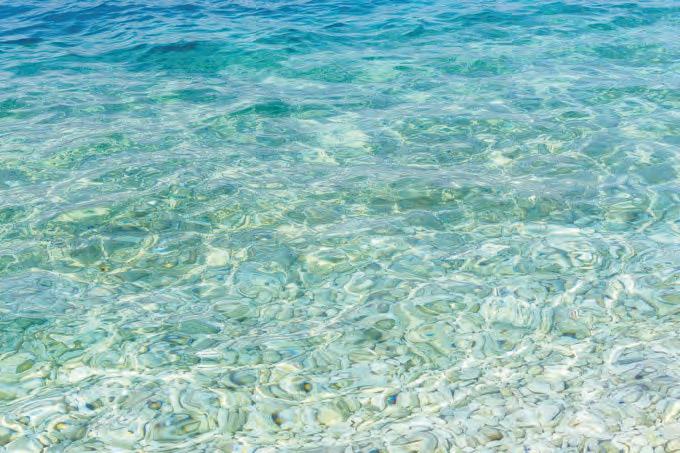









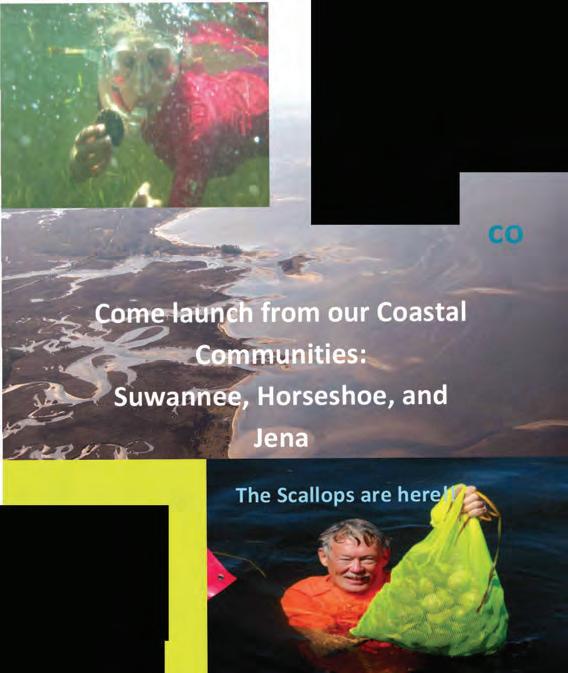



The quest to find the ultimate men’s watch has traditionally been a difficult one in the world of fashion. A timepiece with the perfect look and functionality has long been the goal of both watch designers and enthusiasts alike.
The Renegade Blue Chronograph Men’s Watch is the perfect combination of style and function. With a sleek design that features a bold blue dial, rose gold hands and hour markers, and a durable sports silicone band, this timepiece will instantly elevate any outfit.
The three sub-dials provide a precise timekeeping function. The sports silicone band is durable yet comfortable, providing a secure fit that won’t slide around on your wrist. The band is also easy to clean and maintain, making it perfect for everyday wear. The watch’s 30 Metre Water Resistance rating ensures that it has you covered whatever the occasion.
The Renegade Blue is also built to last, with a sturdy stainless steel caseback and exquisitely detailed bezel. The watch is powered by a super reliable quartz movement, which is covered by our incredible 5 Year Movement Warranty - ensuring accurate timekeeping for many years to come!



At the amazingly low price of just $99 plus S&H, this watch is an absolute steal. Don’t miss out on the chance to own the Renegade Blue and Rose Gold Chronograph Men’s Watch - order yours today!












